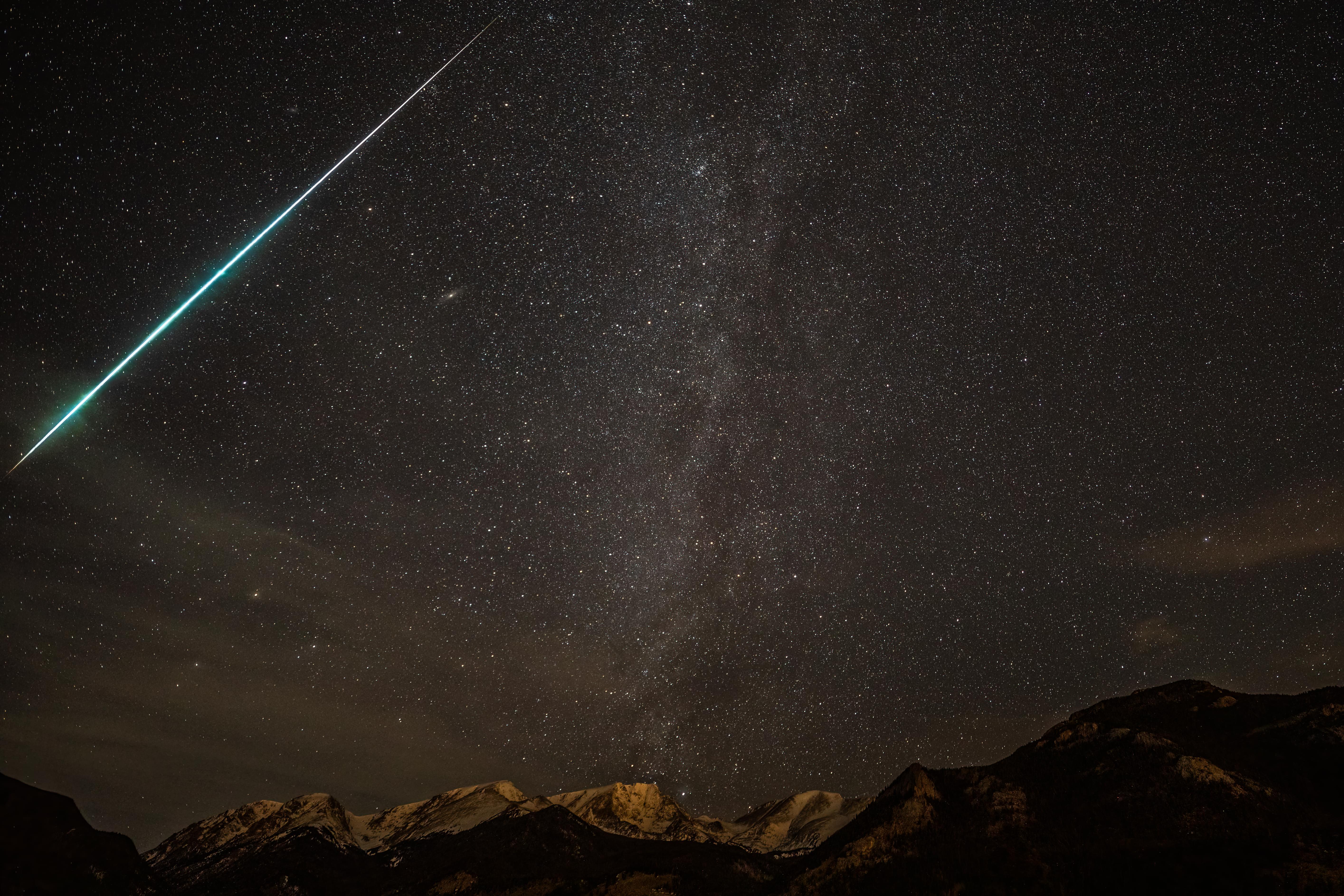I’ve dabbled rather casually in astrophotography over the years, much of which predates the existence of this site. All with standard off the shelf DSLR (and now mirrorless) equipment and without the aid of anything other than a tripod.
The Great Conjunction of 2020
We drove a long way down to the very southern edge of Virginia to observe the conjunction of Saturn and Jupiter, the closest the two planets have appeared in the sky in a very, very, very long time! It was definitely worth the long drive, both to get a dark sky and also to avoid overcast skies further north! We were quite astonished to be able to make out the rings of Saturn!
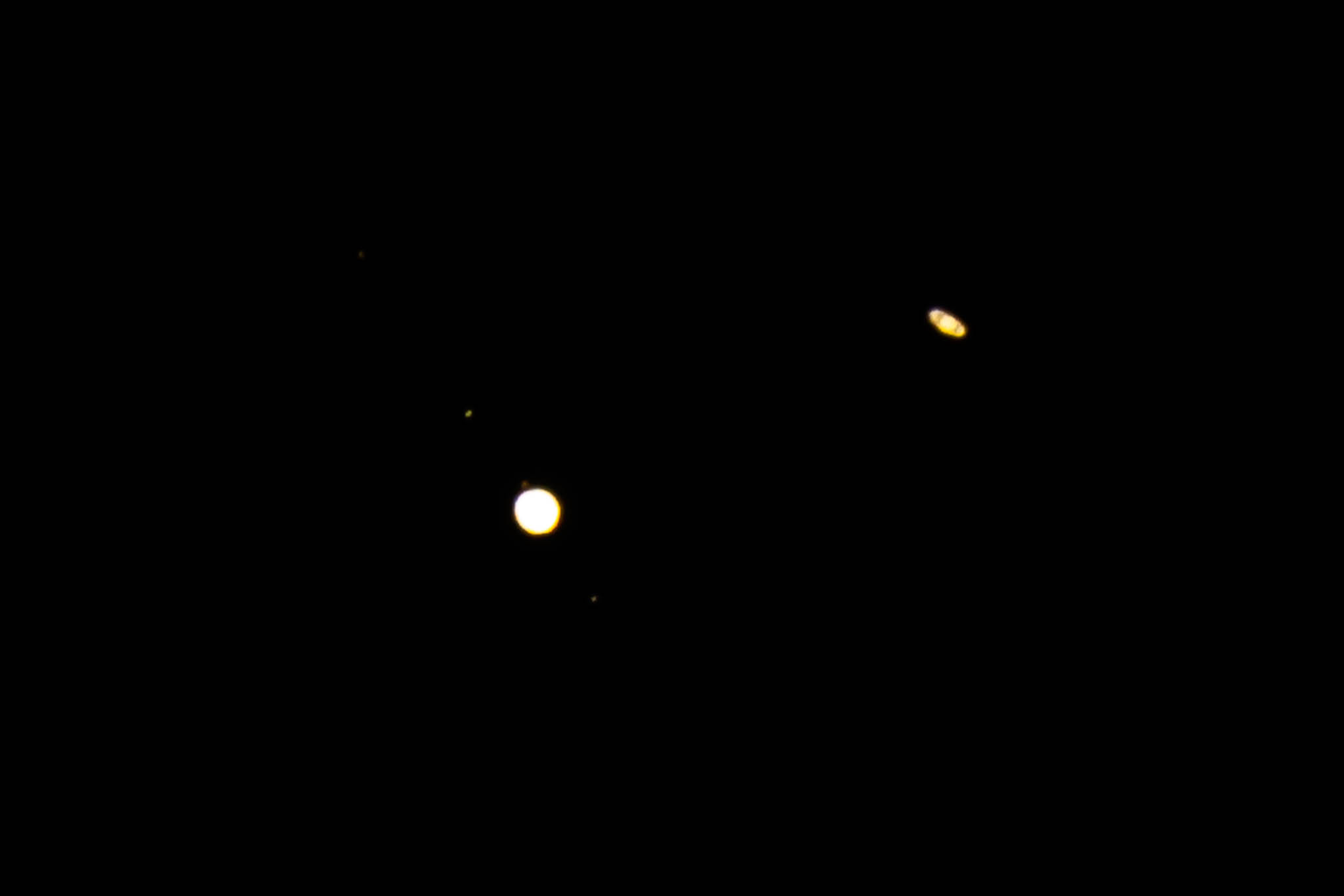
This image was captured using the latest and greatest mirrorless technology, the Canon EOS R5. The autofocus on this body is amazing and is capable of accurately focusing on a single star! And the 45 megapixel body allows for quite a bit of cropping. The lens was the Canon RF800mm F11 IS STM. Definitely not what one would consider a “professional” quality lens but still quite an achievement for Canon to be able to cram a 800mm lens into a hand holdable package roughly the size of a 100-400 lens. F11 is also pretty slow as far as photography is concerned but still good enough to capture this photo using ISO 800 and a quarter second exposure!
Shenandoah Milky Way
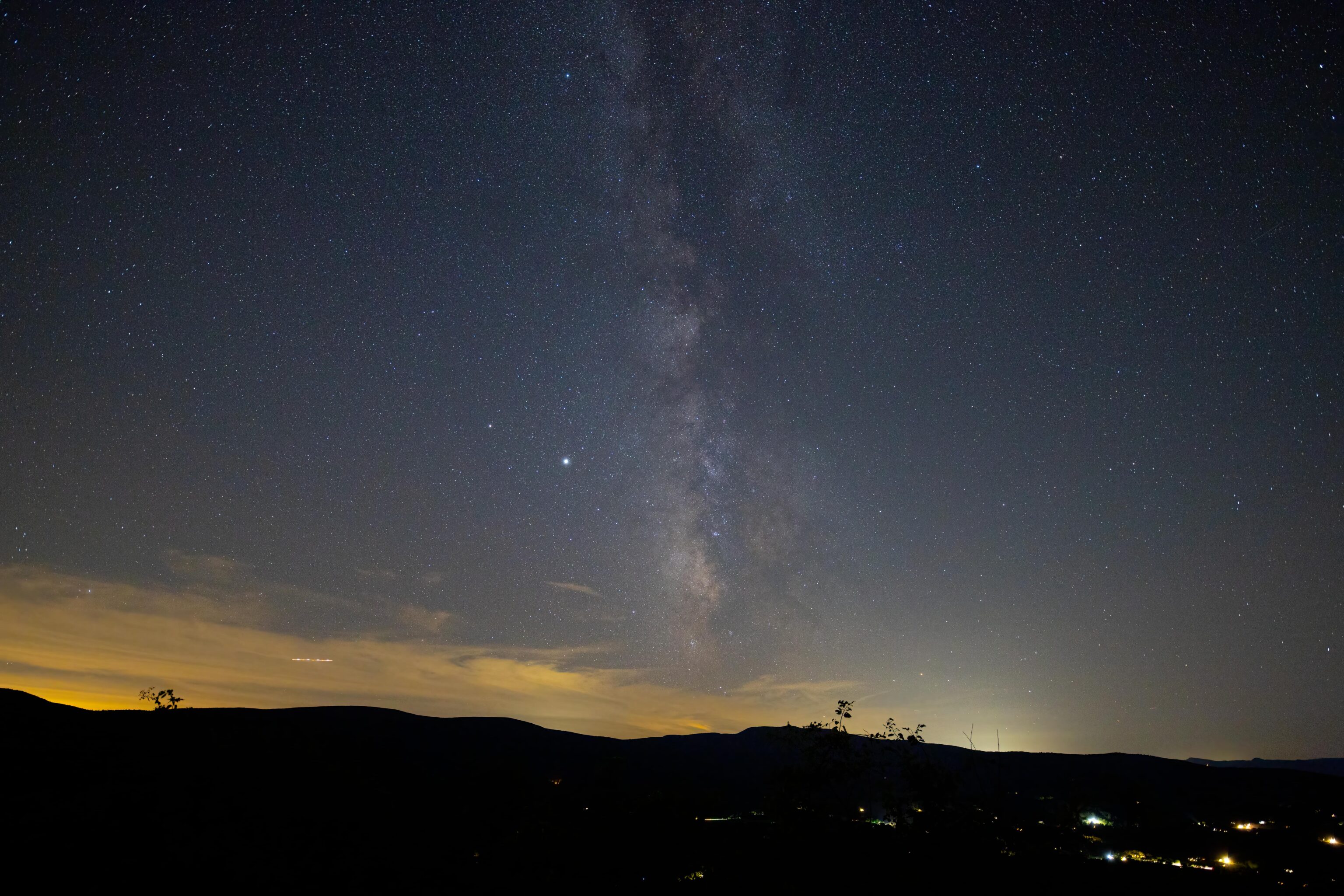
We took a quick trip to Shenandoah to view and photograph the Milky Way from a place with less light pollution than back home. This what I had to say about it at the time:
We took a short evening trip to Shenandoah National Park earlier this evening to take a look at the Milky Way! The weather was forecast to be good with clear skies and without the smoke from the west that has been present for the past week. There were a few clouds in the sky as night fell but it ended up being clear to the southwest where the Milky Way appeared once the sun set. Despite some light pollution from the valley below, it was still dark enough to see with the naked eye! In addition to the Milky Way appearing prominently down the middle of this photograph, Jupiter is the bright light just to the left of the Milky Way and Saturn is the dimmer light up and to the left of Jupiter.
Day Moon
The moon is incredibly easy to photograph during the day! Just point and shoot!
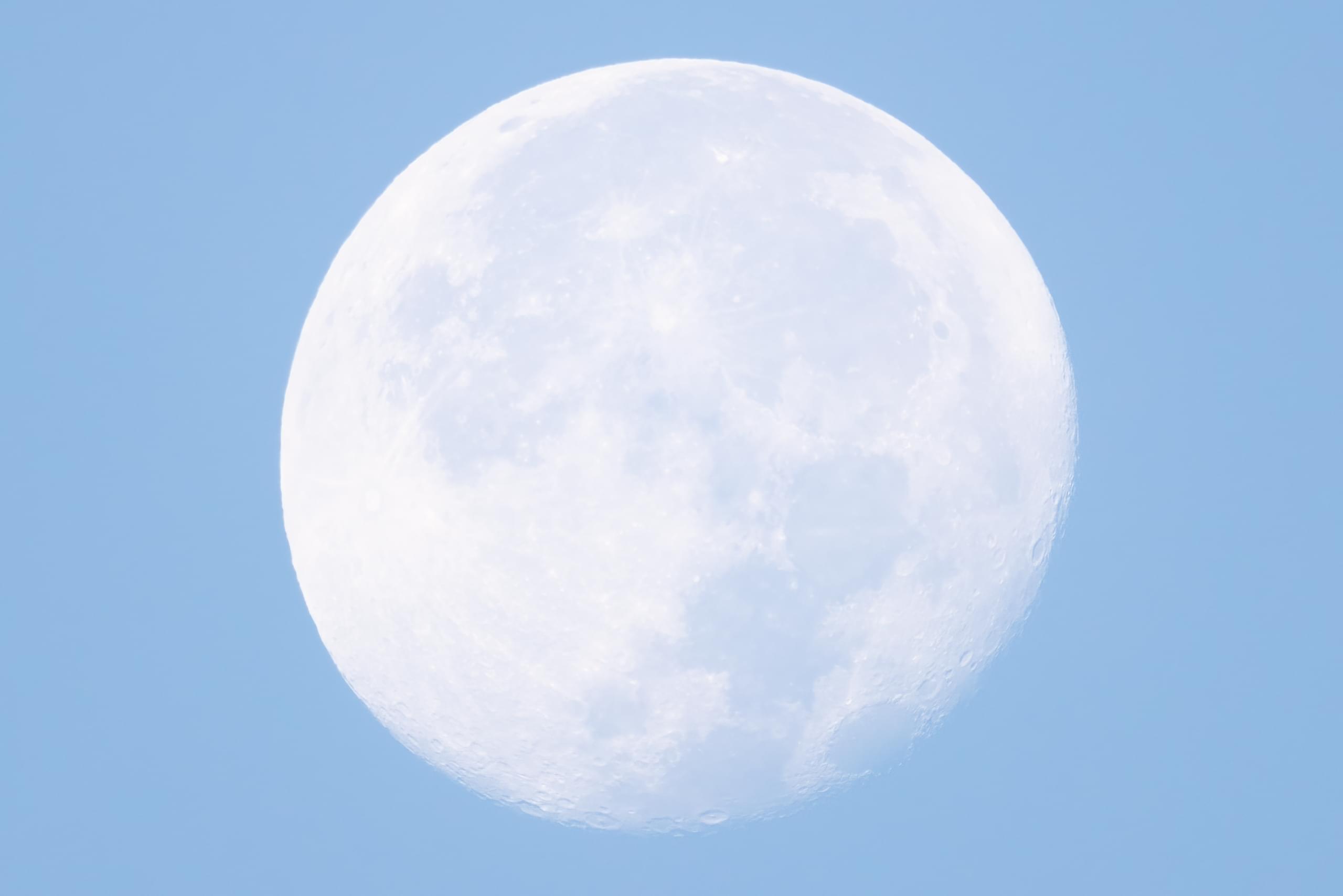
It does help to have a 800mm lens though and a very high resolution camera for cropping!
Comet NEOWISE
Also in 2020, we made a few attempts at observing the newly discovered comet C/2020 F3, commonly referred to simply as NEOWISE after the satellite that discovered it. Below is a copy of the posts I made on Facebook at the time for two of our successful observations.
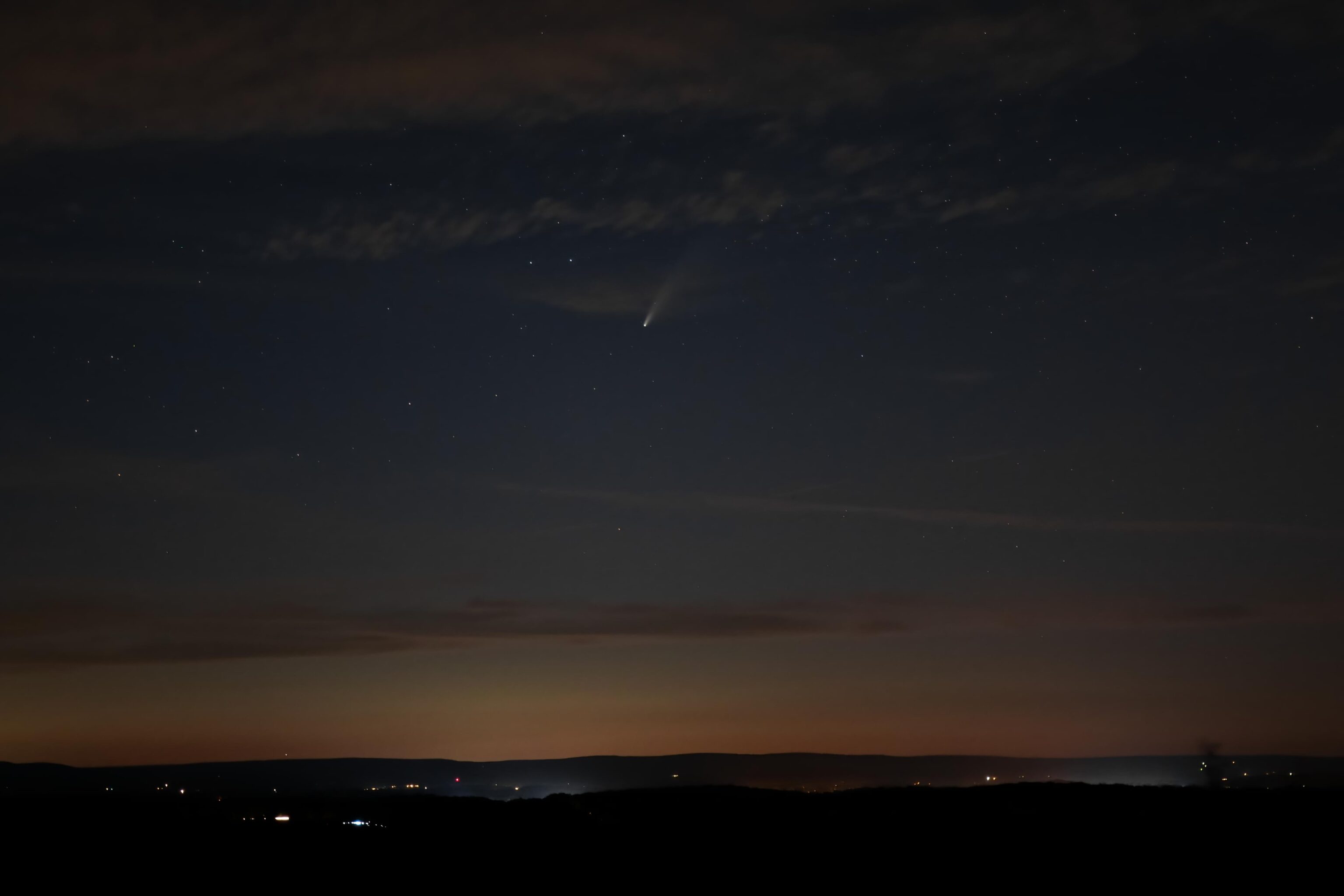
We finally got a photo of Comet C/2020 F3, more commonly known as Comet NEOWISE for the satellite that first discovered it earlier this year! We had been trying to find it at night for the last few days but didn't have any luck locally due either overcast skies or clouds showing up right where the comet was supposed to be in the sky! This evening, we decided to drive up to Gettysburg as it was forecast to have a mostly clear sky. It is also a rural area which has significantly less light pollution. We went to Little Round Top as it is substantially higher than the surrounding area and has a developed but unlit overlook area facing west. It was unfortunately cloudy at sunset and it seemed like we might not be able to see the comet tonight. But we stayed and luckily the sky gradually started to clear, resulting in a band of clouds near the horizon and another band higher up. We periodically took photos of the sky while hoping that the comet would appear in between the two bands where we expected it, about 15 degrees above the horizon. And indeed, it did! It gradually appeared at the very bottom of the upper band, just a little speck with just a hint of a tail. As time passed, the band of clouds moved upwards and the comet moved downwards. Eventually, we were able to see the entirety of the comet's tail on the camera. We were also able to just barely see the comet with the unaided eye, though it was extremely faint. The comet should has two tails, but unfortunately were were not able to see the fainter ion tail in any of our photos. NASA's Astronomy Picture of the Day has an incredible composite photo clearly showing the two tails: https://apod.nasa.gov/apod/ap200716.html
There are much better photos of this comet out there on the internet. In particular, ones that were taken with a telephoto lens (or an actual telescope) and with better atmospheric and light conditions as well as additional image processing.
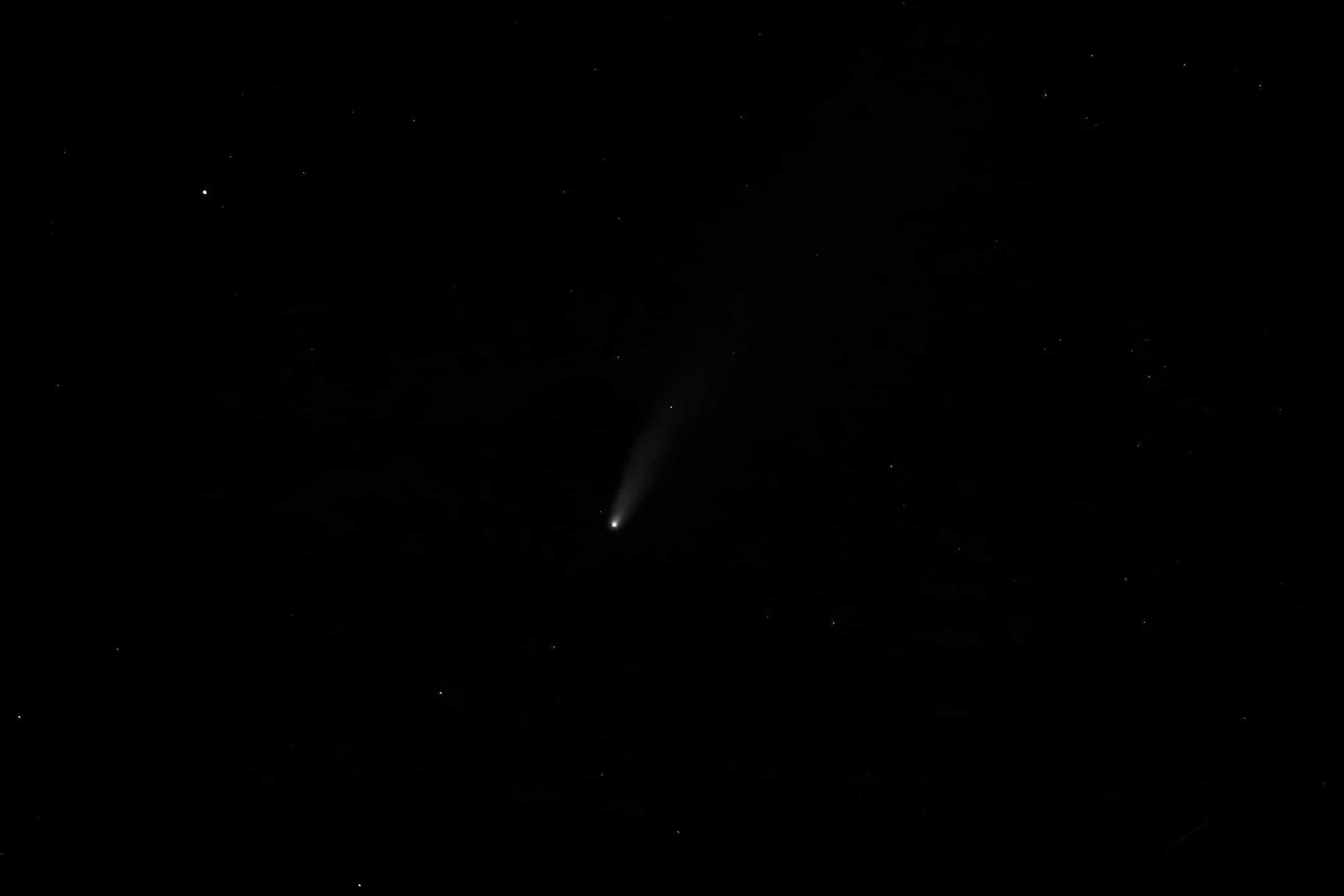
This above photo is not one of those better photos but was taken with a lens at 100mm and then cropped. In particular, it doesn’t show two tails and has no interesting foreground.
We made a second successful attempt at observing the comet the next day, though at a location with significantly more light pollution.
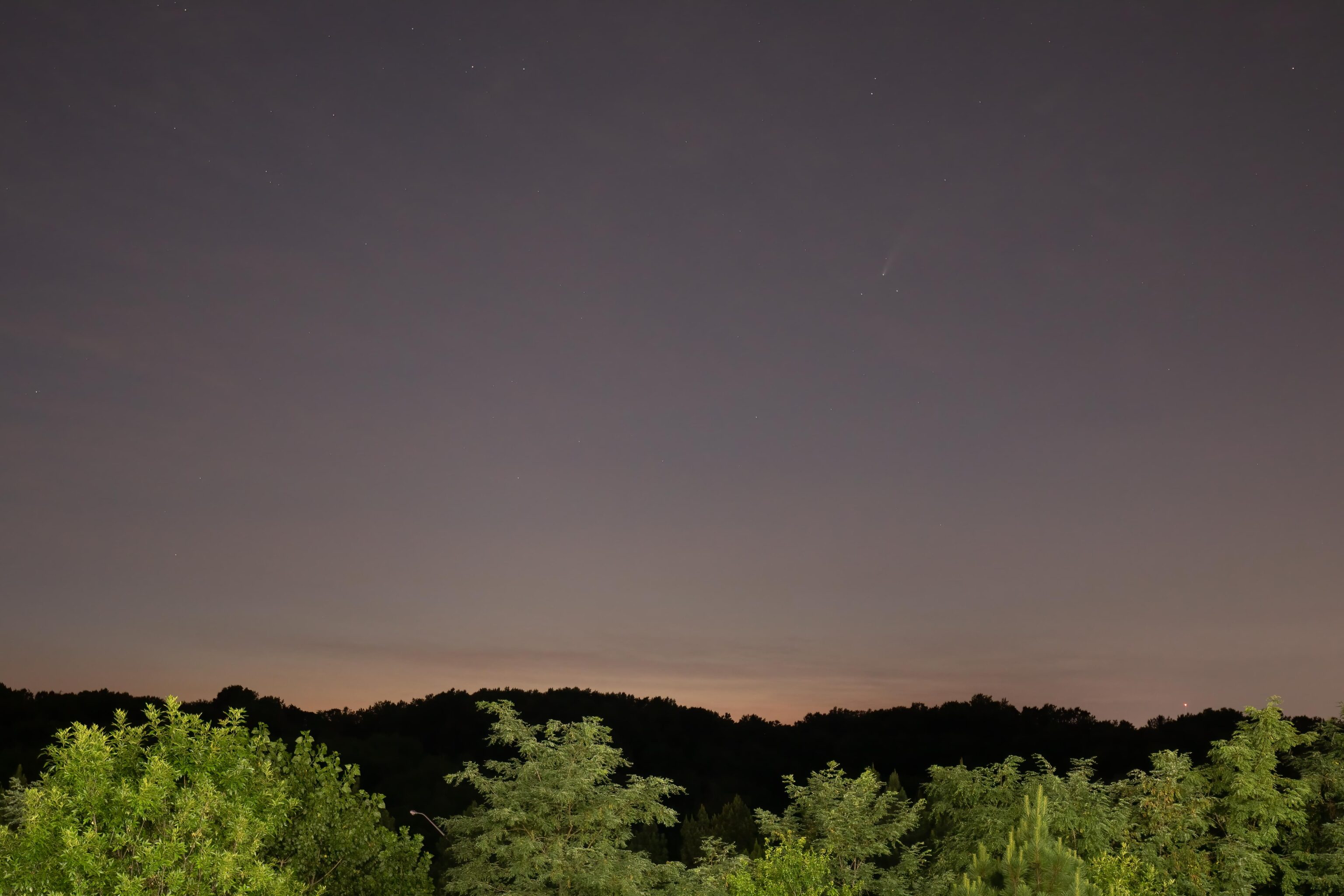
As the forecast for tonight called for clear skies, we went out again to see Comet C/2020 F3 (NEOWISE) at a hotel parking lot that has a clear view of the horizon to the west. We quickly found the comet in the camera though we were never able to see it unaided. Although we were at a relatively dark spot, the suburban light pollution is still way too much. The visibility of the comet was significantly worse than when we viewed it yesterday at Gettysburg. There is also an extremely thin layer of clouds which is barely visible but likely is also contributing to the brightness of the sky. It is more apparent on the 3 minute long exposures that we took. This photo is a significantly shorter 5 second exposure. If it wasn't for COVID-19, we would probably travel somewhere with significantly darker skies.
Night Moon
The full moon is pretty easy to photograph at night. It is extremely bright and can be easily photographed hand-held, though you will likely get better results with a tripod.
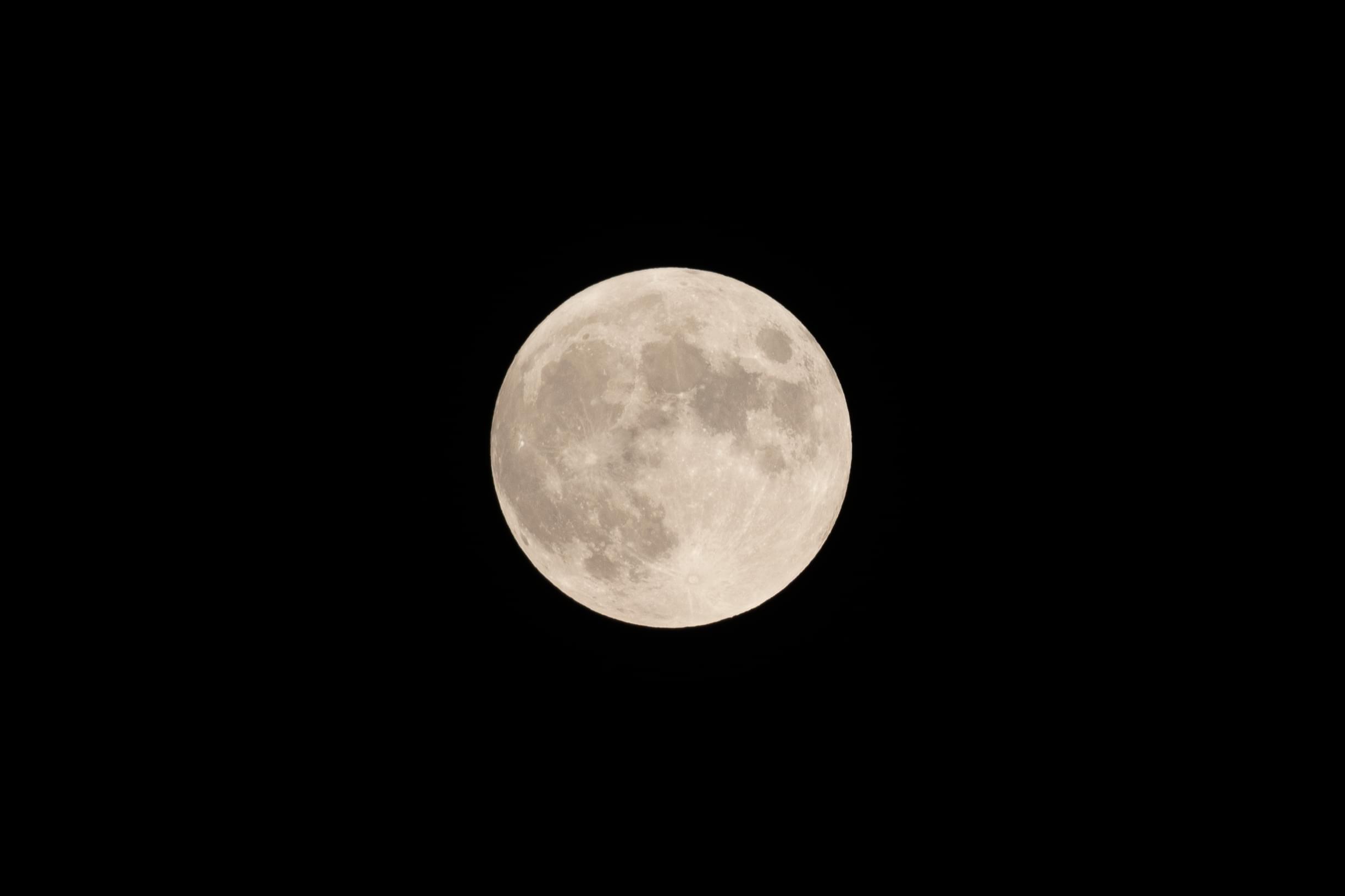
We took this photo on the 4th of July after Hagerstown’s fireworks, one of the few towns in the region that actually had fireworks in the middle of the pandemic!
The Geminids
Back in 2018, we happened to be in Colorado during the Geminids in December. We decided to observe from Rocky Mountain National Park as it is a scenic location with mountains that could appear in our photos of the night sky. This was the only time we rented a lens!
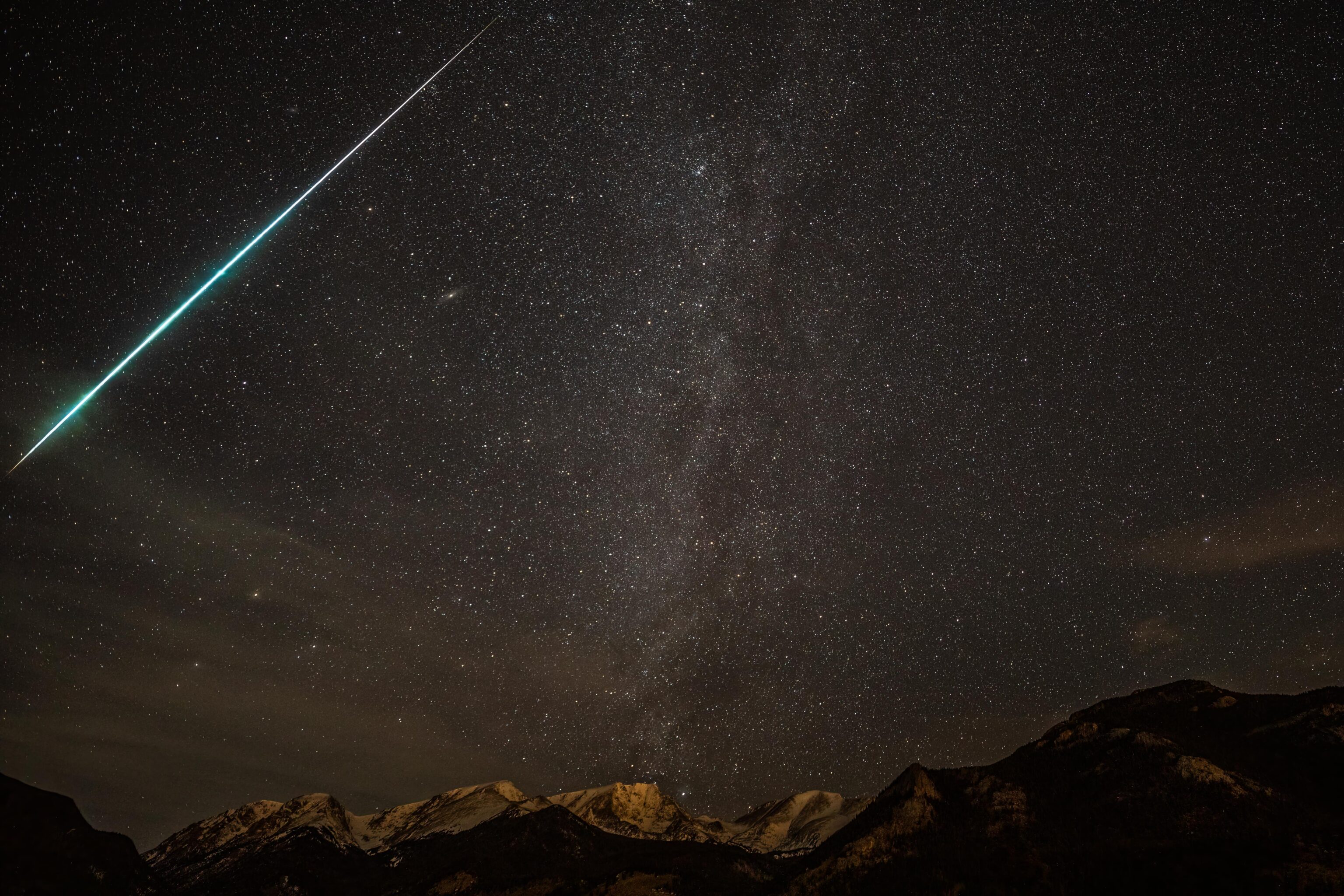
We drove out to Rocky Mountain National Park tonight after the moon went down to watch the Geminid meteor shower. We were quite lucky to witness two fireballs, the bigger of which I managed to capture on camera! It appeared as an incredibly bright fast moving point of light followed by a streak of green lasting for perhaps 2-3 seconds. The camera captured it in the edge of its field of view but I saw it directly in front of me shooting down and towards the horizon. An absolutely amazing sight to see! Based upon what I'm reading and the apparent brightness of the fireball, personally witnessing this could be a once in a lifetime event! For the hour or so that we spent observing the sky, we saw lots of regular meteors, often multiple in the sky at once. They moved extremely fast and lasted less than a second each. On camera, they appear to just be a very short streak of light. I rented a Sigma 14mm f/1.8 lens from LensRentals.com specifically for photographing the meteor shower and am quite happy I did! Photography is one of those things where you'll often hear gear doesn't matter. Well, sometimes it does matter. None of the lenses I have are physically capable of gathering enough light to capture the night sky in the way that I could with this super fast and super sharp lens!
We took some other photos as well, though none of them were as special as the one with the fireball!
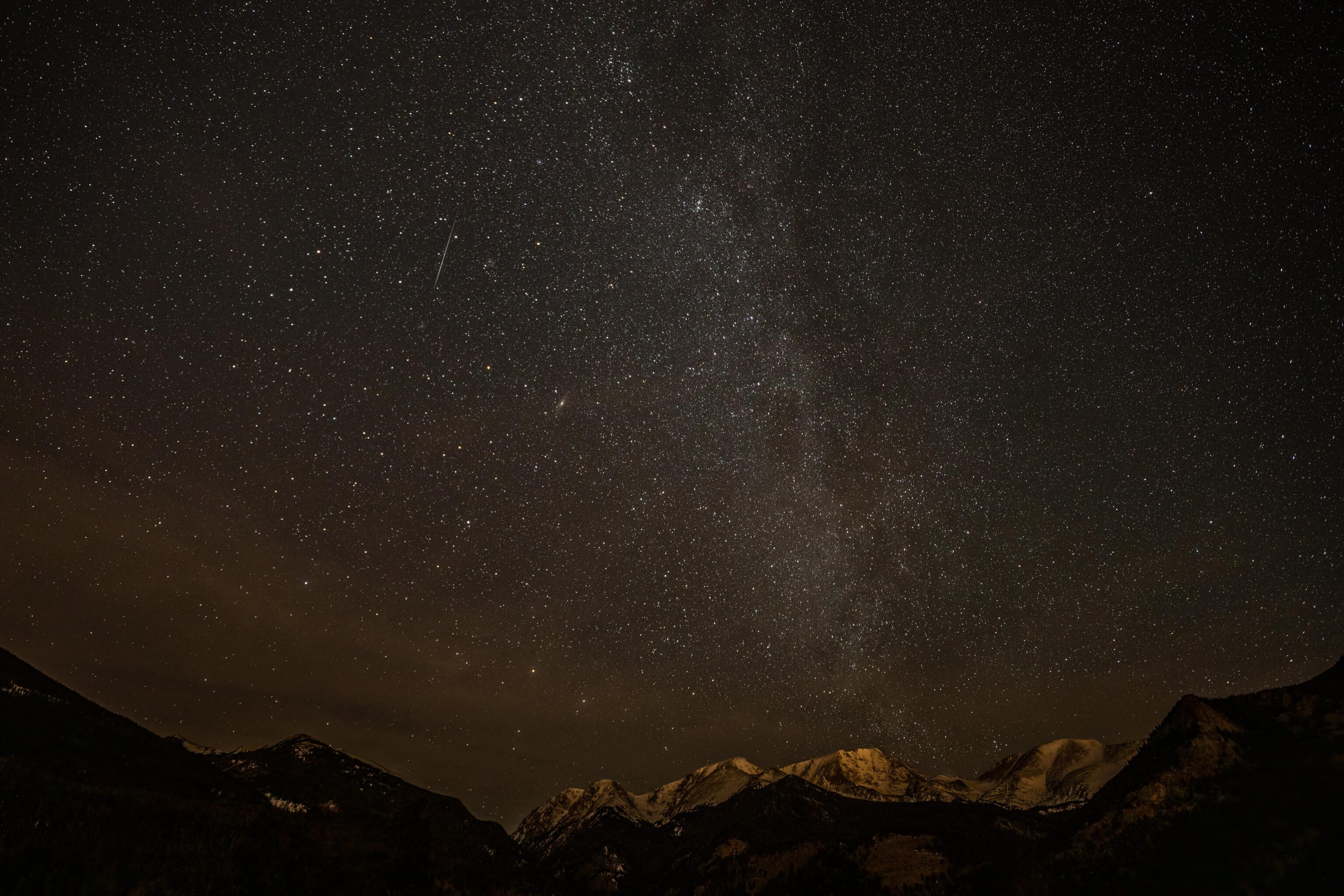
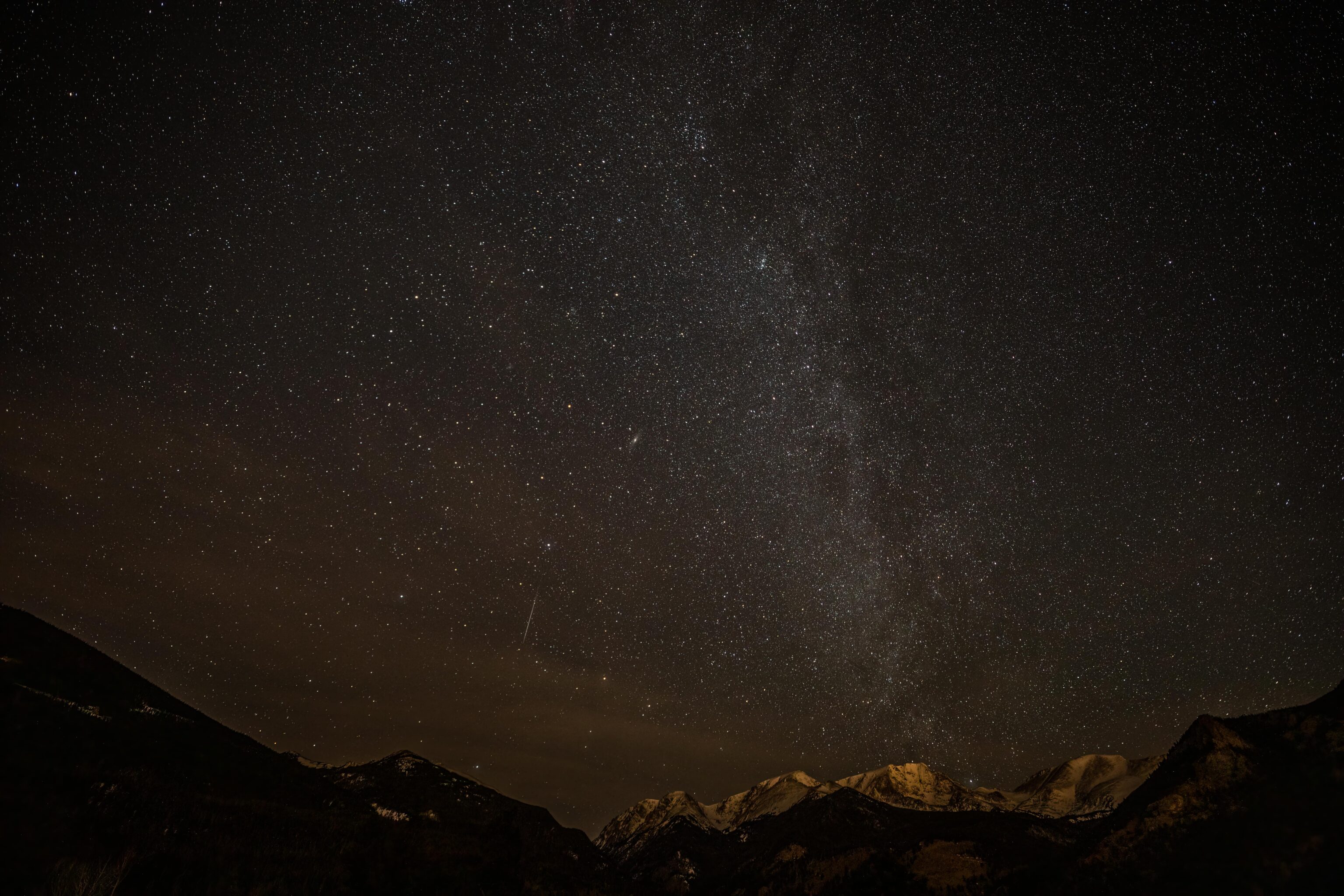
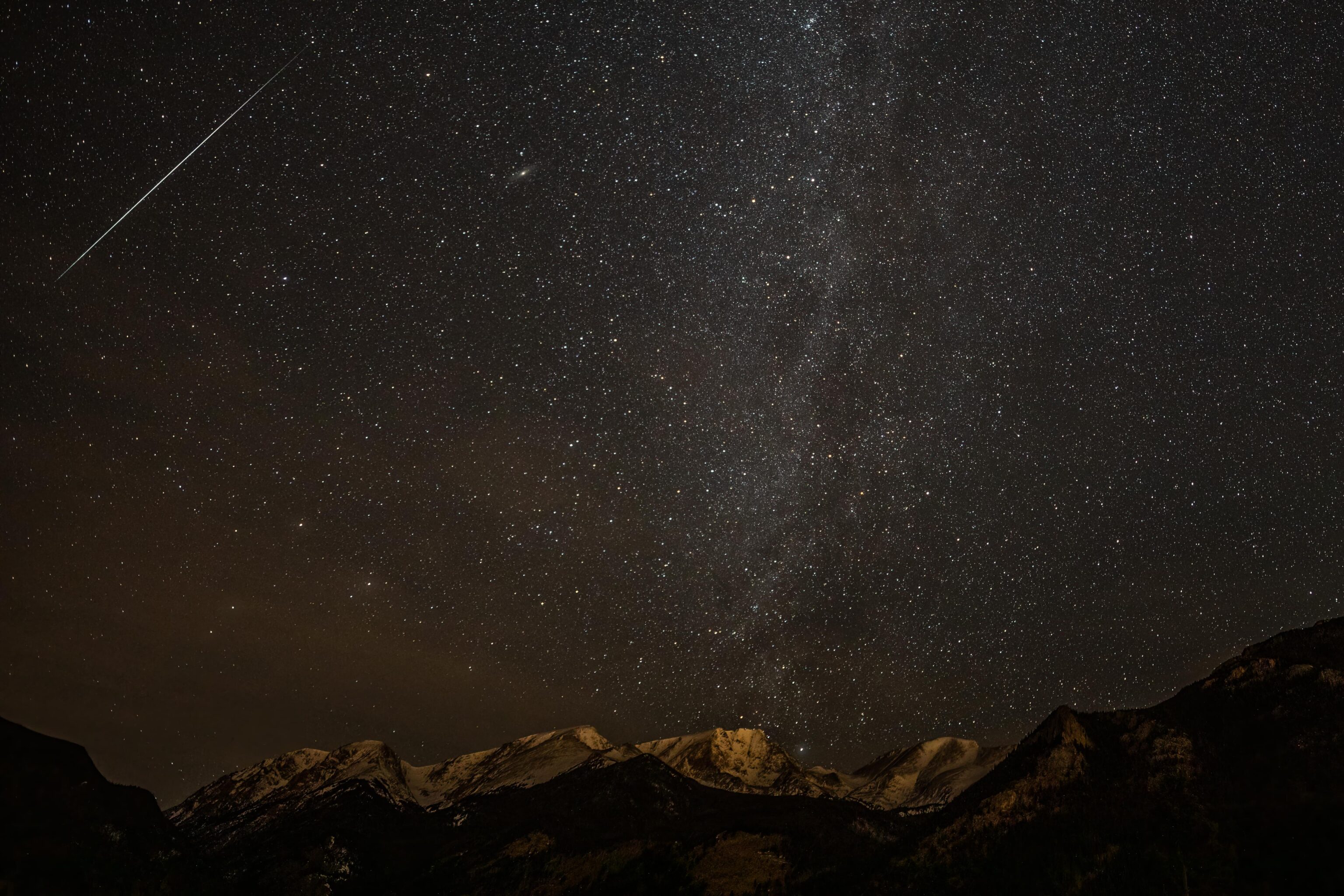
We took quite a few photos due to simply leaving the camera on a tripod and having it continuously shoot 13 second exposures. They all look very similar other the stars moving as the Earth rotates.
Rocky Mountain Skies
On the same trip, we tried to take some Milky Way photos at some other locations while we were passing by at night.

We figured Arapahoe Basin would be a wonderful backdrop for a Milky Way photo. Unfortunately, the sky was too bright. Its a nice photo of the ski area but the stars aren’t too impressive.
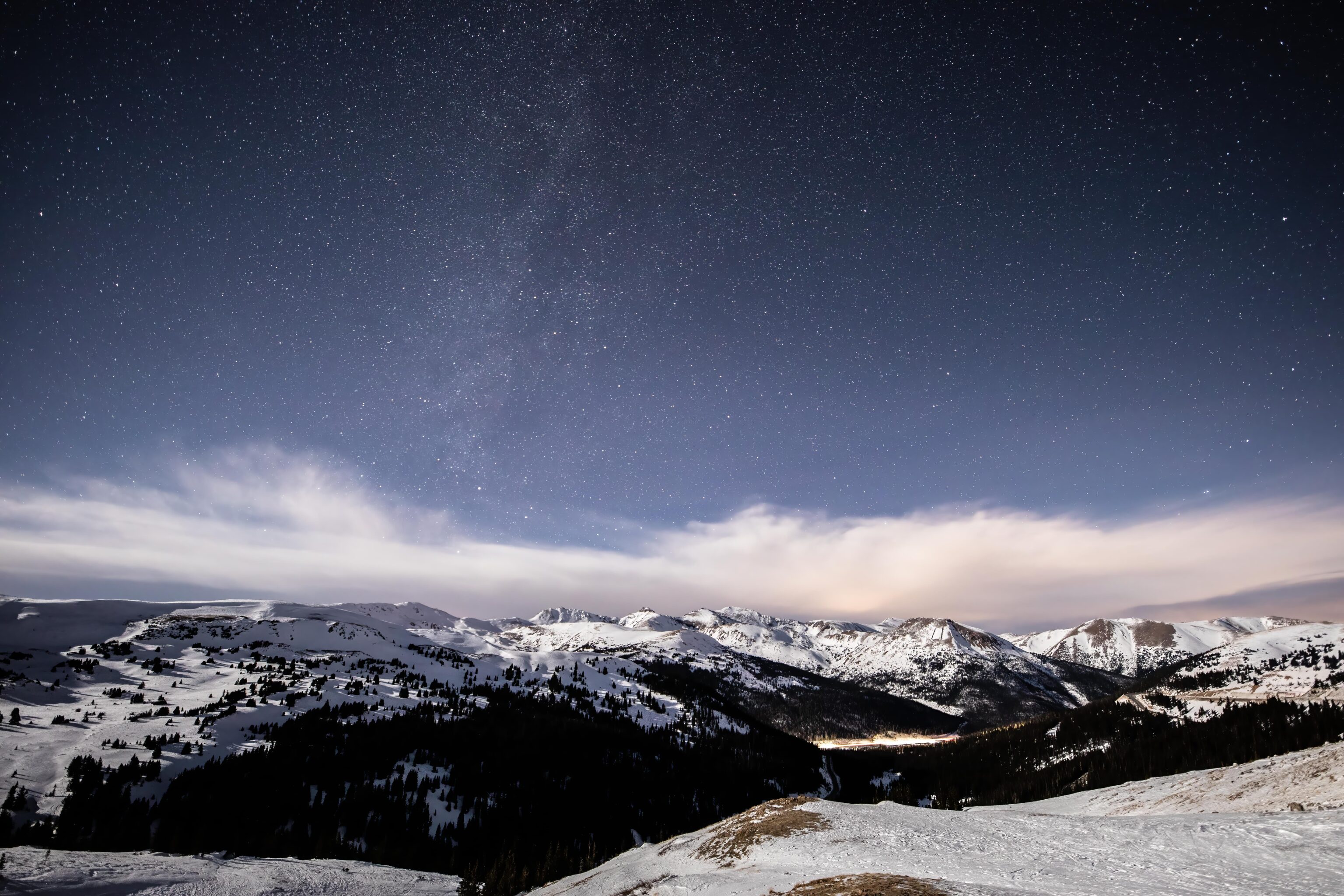
We stopped at Loveland Pass along the Continental Divide, just a short distance to the north of Arapahoe Basin. A bit more darkness in the sky and a much more noticeable Milky Way along with a pretty snow covered foreground.
Crater Lake Milky Way

We decided to try and see if we could capture the Milky Way with an interesting foreground, Crater Lake in Oregon. Not completely successful in that it was too dark to make out any details of the lake. This particular photograph definitely required compositing the sky with the foreground with different exposures for both to be successful.
We woke up at 1:30am to get to Crater Lake well before sunrise to try photographing the Milky Way above Crater Lake. The weather was forecast to be clear skies and no moon. We lucked out that there was no smoky haze from the fires as well. I did manage to capture the Milky Way though it was too dark to also get much of Crater Lake to show up in a single exposure. There is also a ton of noise on the image. I would have had better results if I had a different lens for this purpose but unfortunately I didn't. Maybe next time I'll have something different...
Rocky Mountain National Park
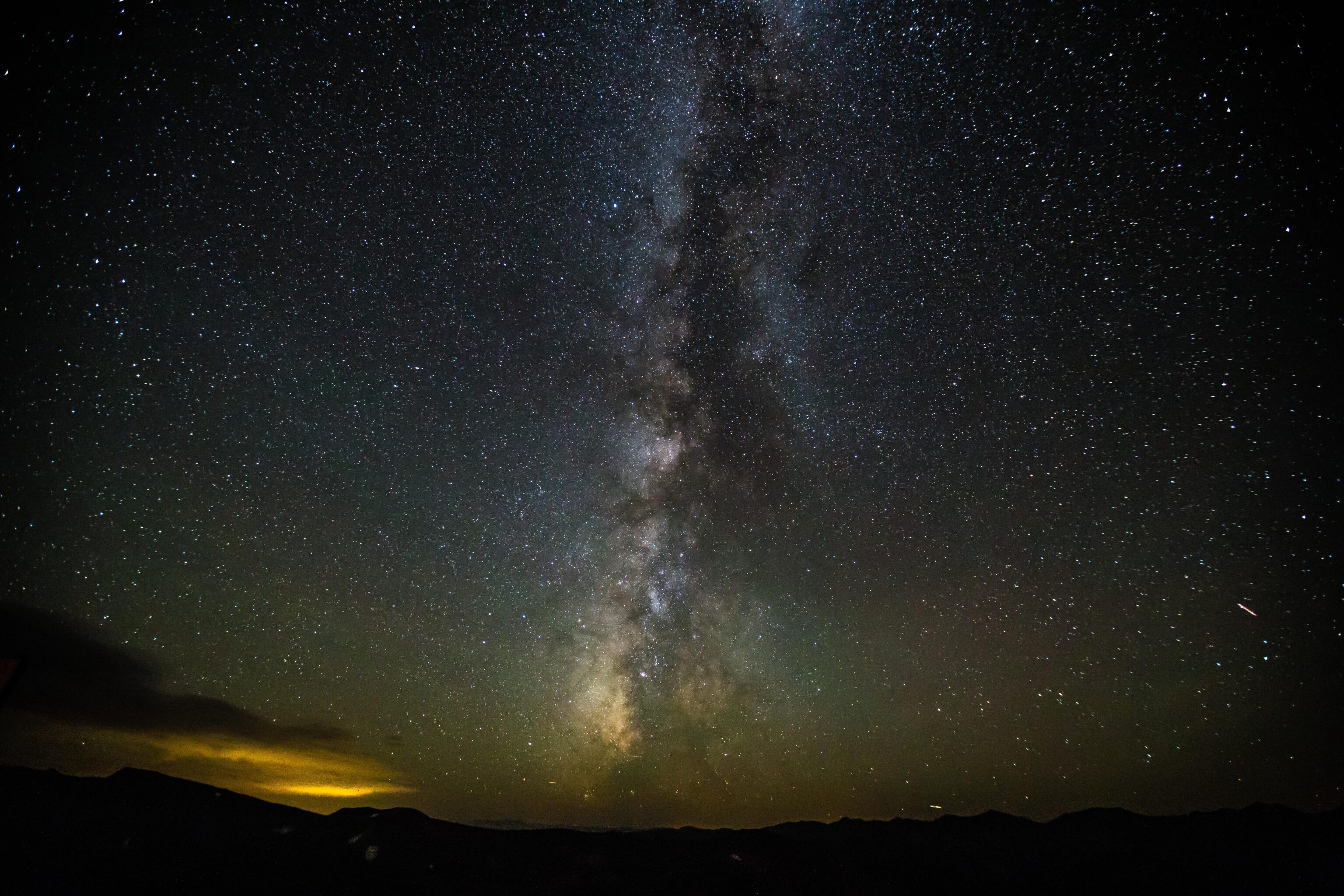
This particular example is with older photographic equipment that does much worse in low light situations.
The main reason I went to Rocky Mountain National Park was to get some skies clear of light for viewing the Milky Way. It was cloudy after sunset so I was a bit worried but things cleared up once it got dark and when the moon went under the horizon. I did try to get some photos from Bear Lake but it was a bit too creepy for me as I really didn't want to run into a bear at night so instead I went along Trail Ridge Road up into the tundra region. This is the first time I've seen the Milky Way from the US!
Supermoon Eclipse
This lunar eclipse viewing opportunity was nearly foiled by incoming clouds! But one of the benefits to being in Boulder, Colorado is that is is possible to go quite far in a short period of time, at least if you’re trying to go east!
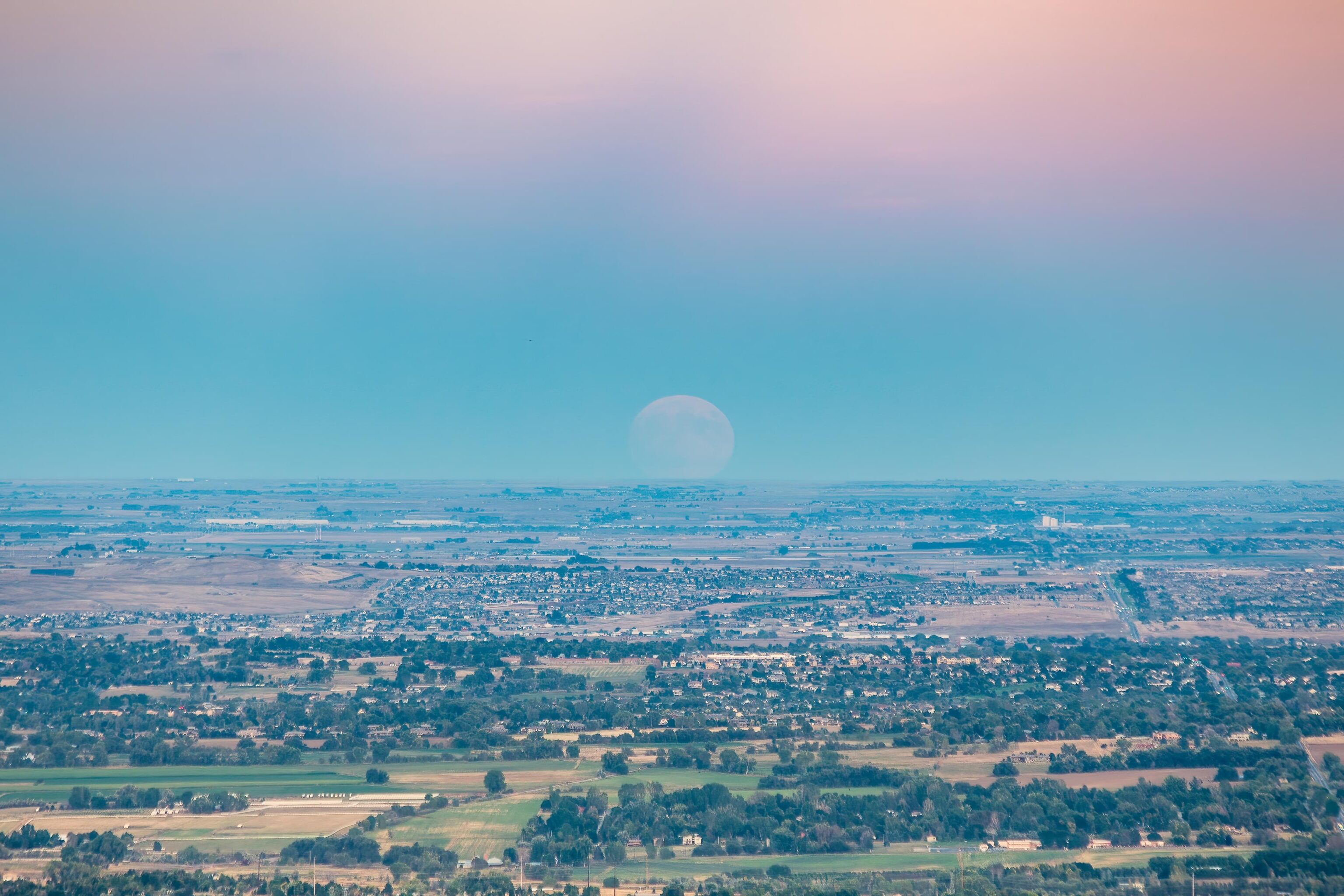
I made it to Flagstaff Mountain at around 6pm to catch the rising supermoon and the eclipse. There were already many people there with more on the way - I ended up at Sunrise Amphitheater where I got a good spot. The moment when the moon rose up over the horizon was quite impressive - it was huge! As it made its way up into the sky, it grew brighter as the light from the setting sun decreased. The moon then proceeded to rise behind a cloud...
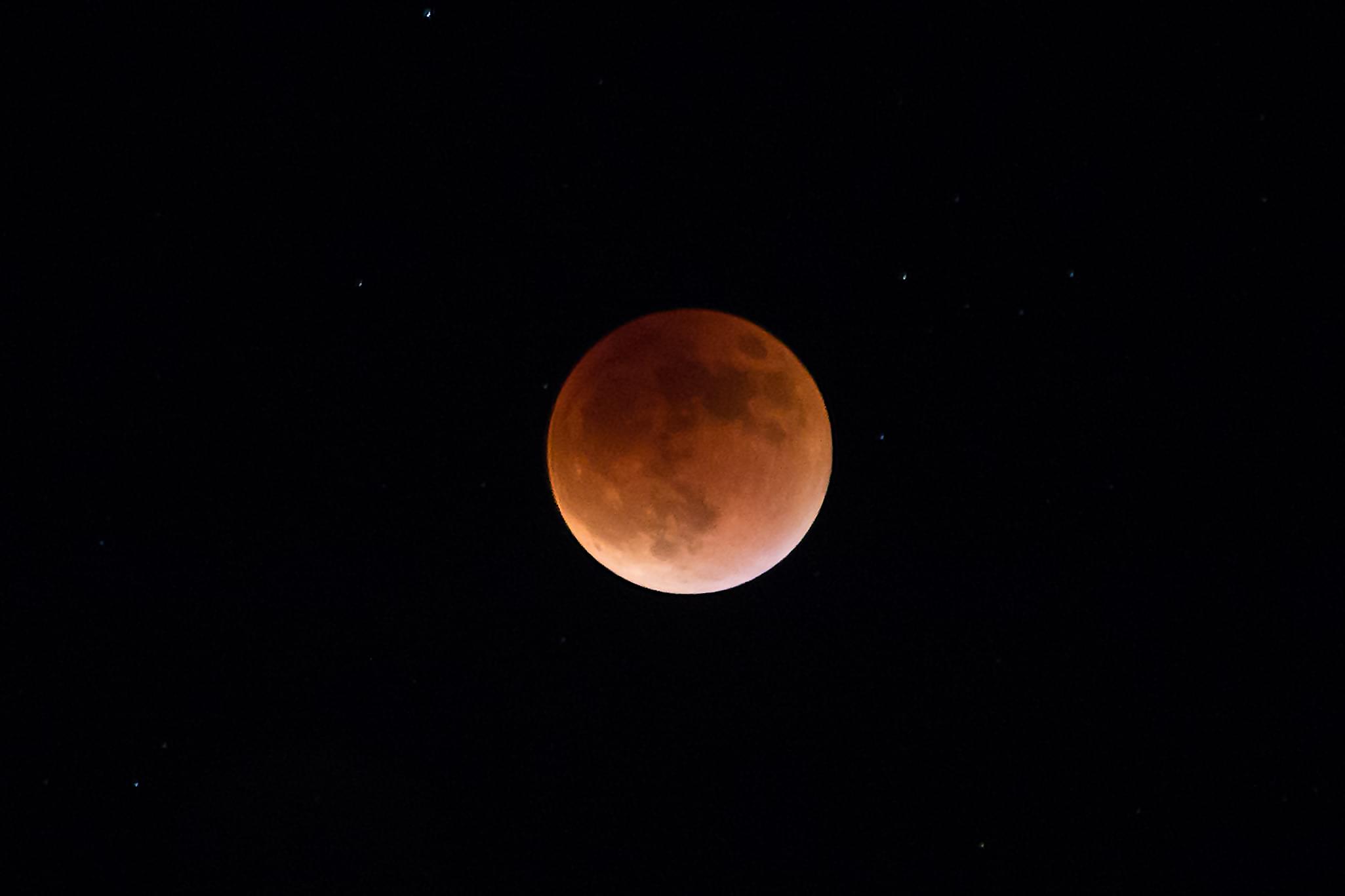
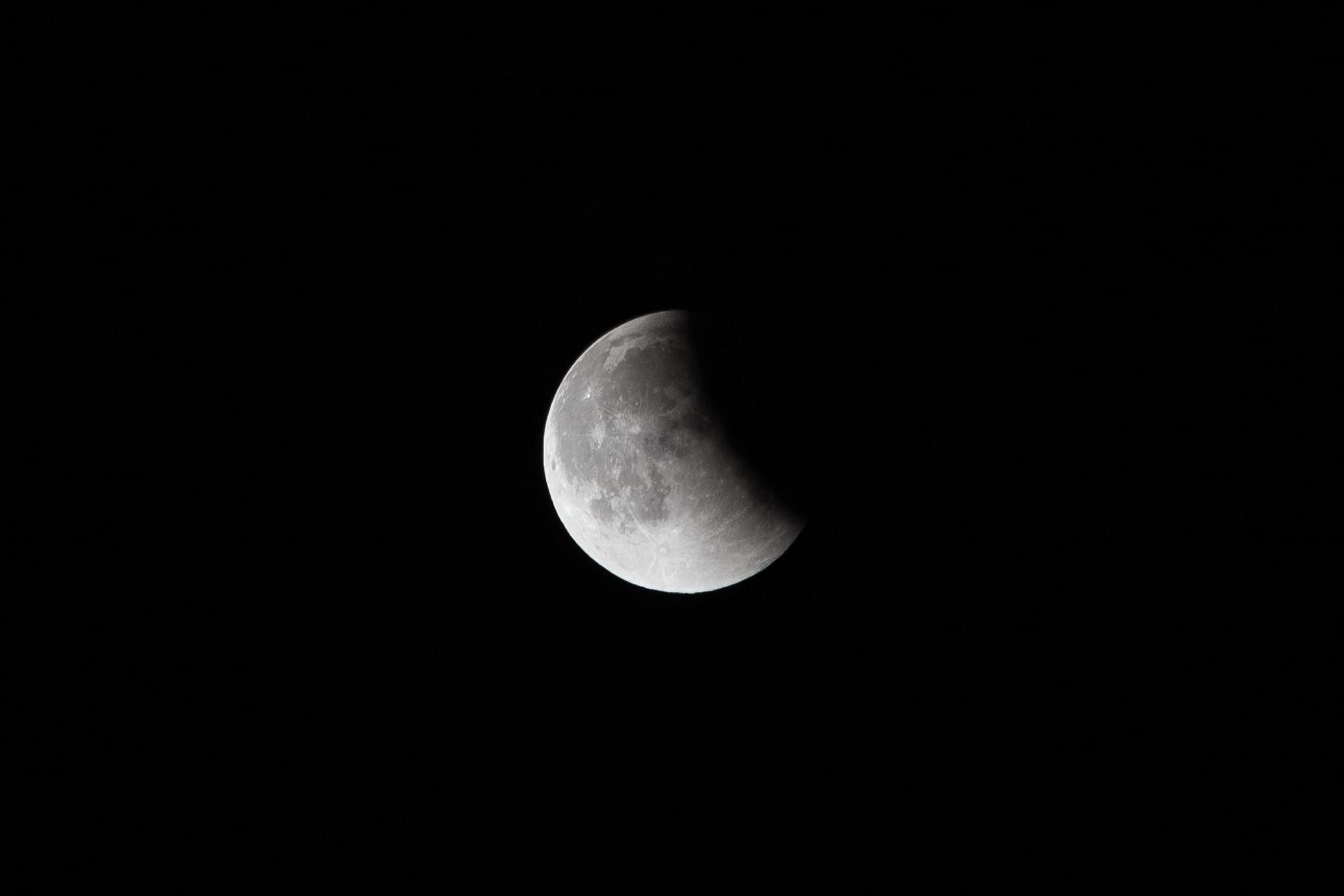
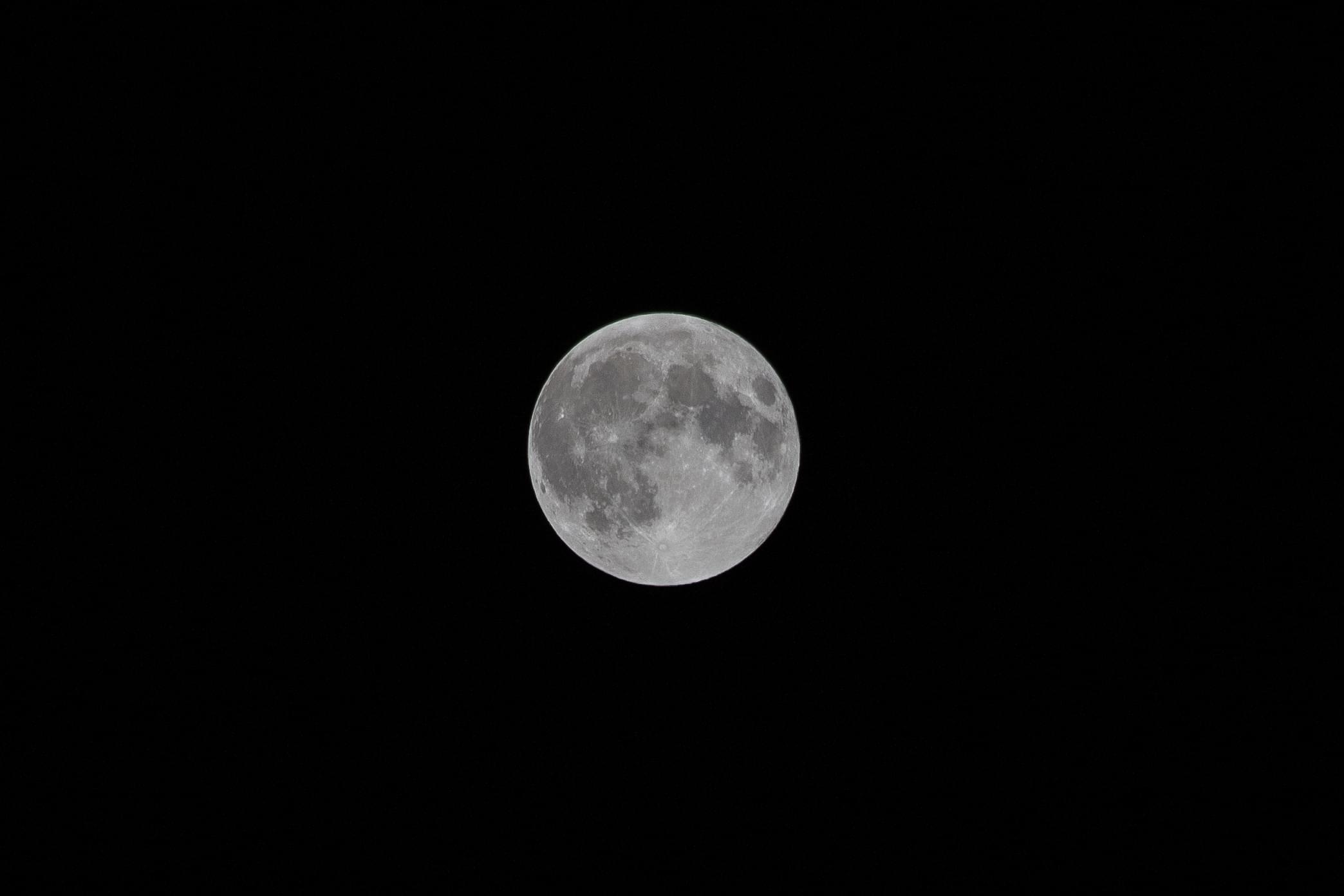
I never really did get a perfectly sharp photo of the moon that night. I partially blame my 70-300 lens, this copy had some issues that developed over time where it basically could never take a sharp photo. Looking back on it now, it was likely a problem with focusing at or near infinity while at or near 300mm, which is precisely the use case that I had for this lens!
Based upon what I could see, I decided to bail and find another location - I was thinking either to head north into Longmont or east to DIA. By now there was a large crowd at the amphitheater. As I drove down the mountain there was a large amount of traffic headed up and people were parked everywhere there was room on the side of the road. I started driving north and then east a bit. As I moved east, a tiny sliver of the moon would occasionally shine through the edge of the clouds. I decided my best bet would be to head east towards the airport as the highway would allow me to drive fast at 75mph. All along the way the moon kept peeking out from the clouds for just moments at a time. I ended up just south of the airport on 56th Avenue. There were a number of cars parked on the shoulder along the road. I picked a spot that seemed good. Eventually, the clouds dissipated and I was able to get some clear shots of the still eclipsed moon!
Plain Old Lunar Eclipse
This was my first attempted at photographing a lunar eclipse! It was a bit of a mixed success. The photos look nice when small but don’t stand up to scrutiny when enlarged.
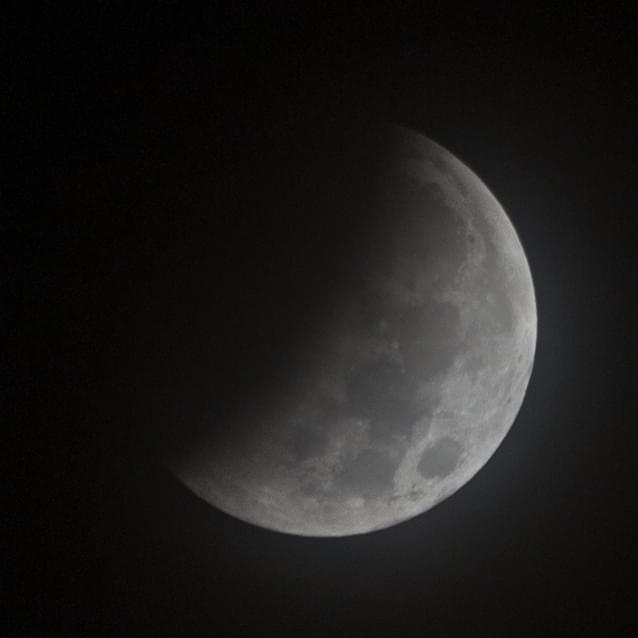
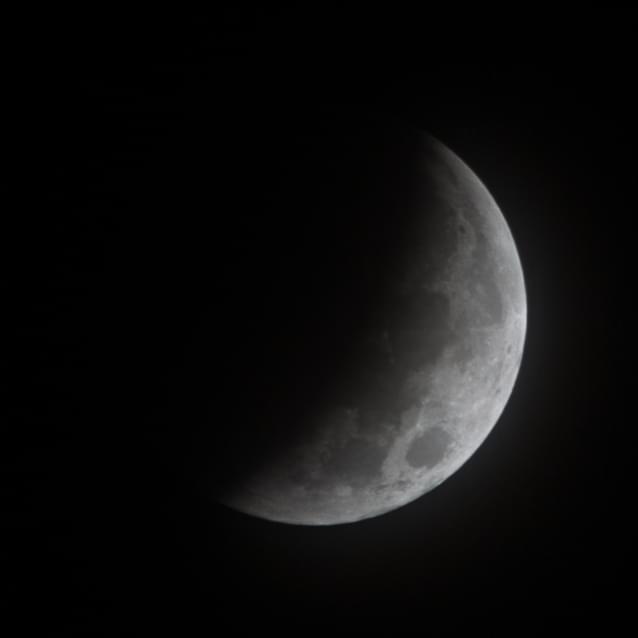
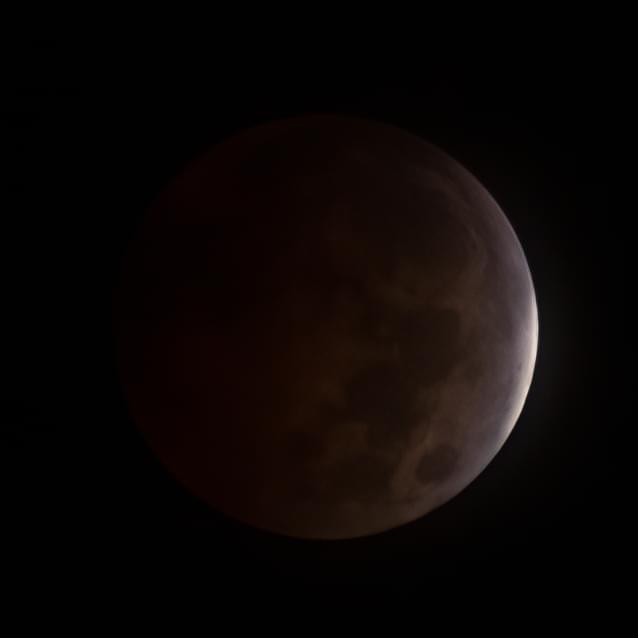
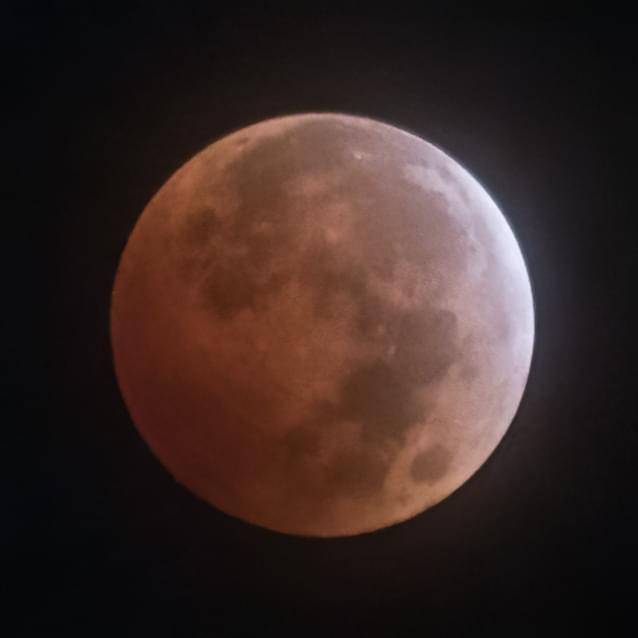
Good weather for the eclipse tonight! Only a little bit of clouds, didn't cause any viewing issues, and the weather is reasonably warm at 49°F. There was a huge difference in the brightness of the moon - about 3000 times difference in exposure between the first and last frames in this collage. The red glow of the eclipsed moon wasn't clearly visible until most of the direct illumination from the sun was gone, although there was a hint of redness well before that which the camera couldn't capture. Space.com has a pretty good "guide" to today's eclipse: https://www.space.com/27353-total-lunar-eclipse-october8-guide.html
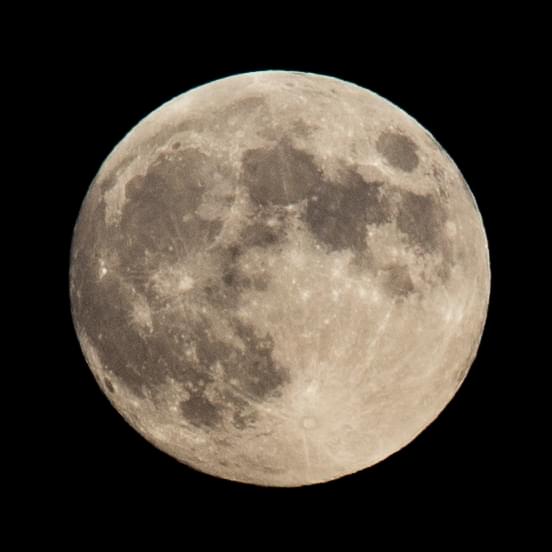
I took a slightly better photo of the moon the night before the eclipse. Though still not great by my current standards!
The moon is just about full right now after rising about an hour ago. The lunar eclipse is tonight - I'll probably go outside and take some pictures when the time comes. TimeAndDate.com has a pretty cool lunar eclipse widget that tells you what it will look like - Boulder is supposed to get a pretty good view of the moon being eclipsed - it will glow red! https://www.timeanddate.com/eclipse/lunar/2014-october-8
Te Anau, New Zealand
This likely never before published photo was taken outside of Te Anau, New Zealand, in the Fiordland region of South Island. I drove to a nearby boat ramp in the middle of the night to get a dark sky without having to go too far.
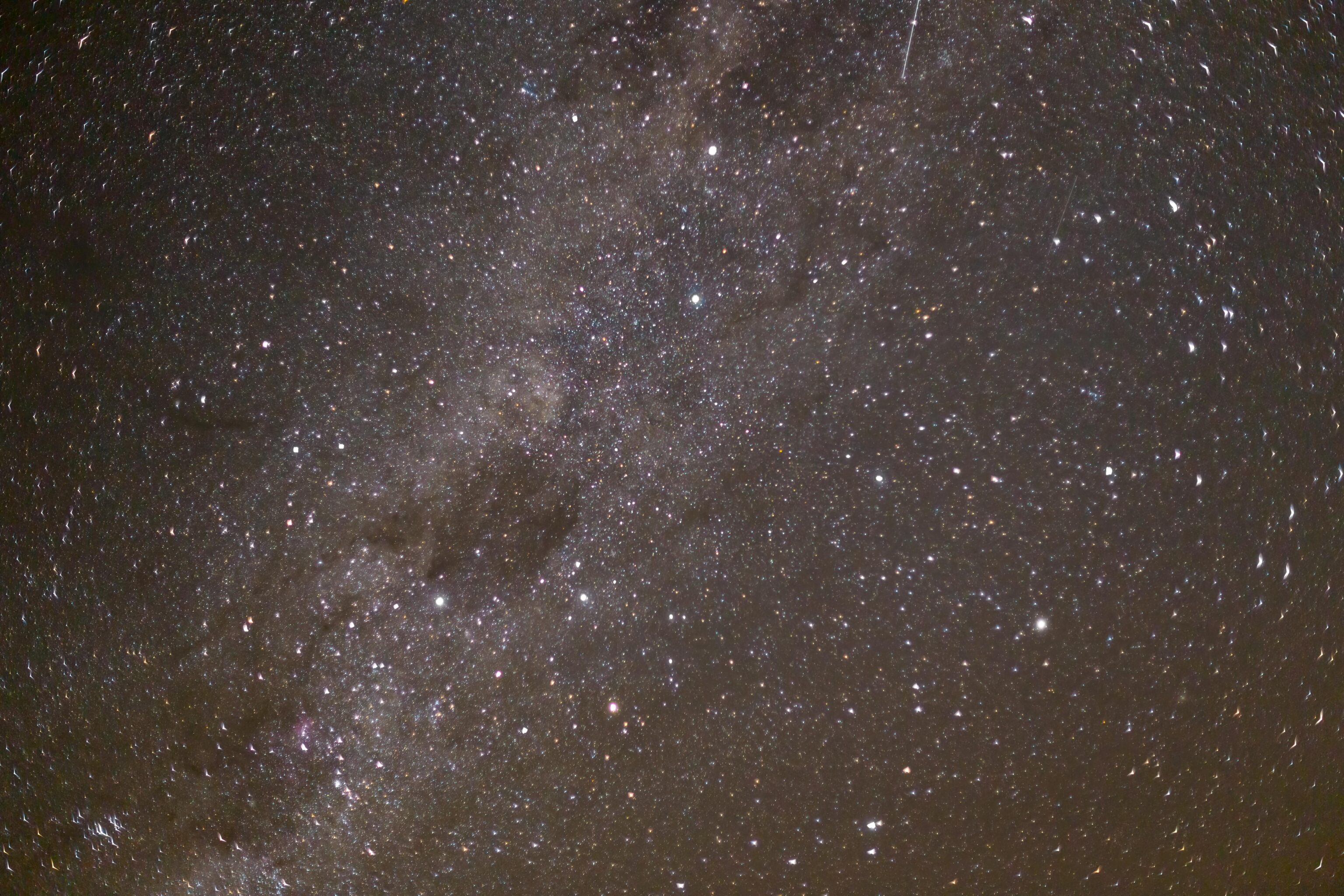
This photo was taken with a Canon EF 50mm f/1.8 II lens, commonly referred to as a “nifty fifty” lens. Its a light and cheap lens that delivers quite good image quality for the price. Unfortunately its not so great for photographing the night sky while wide open which is exactly what I was doing. I did find a astrophotography focused review for a more recent version of this lens. Some of the performance issues described are clearly visible in this photo, particularly at the edges of the frame.
There are some thin streaks of light in this photo and in others that I took around the same time. There are no meteor showers that peaked around this time. They could be aircraft as there are a few cases where they appear in multiple frames and are following the same straight path.
Jabiru, Australia
This was my first time ever trying to photograph the night sky. It was an incredibly dark evening near Jabiru in Kakadu National Park in the remote Northern Territory state of Australia.
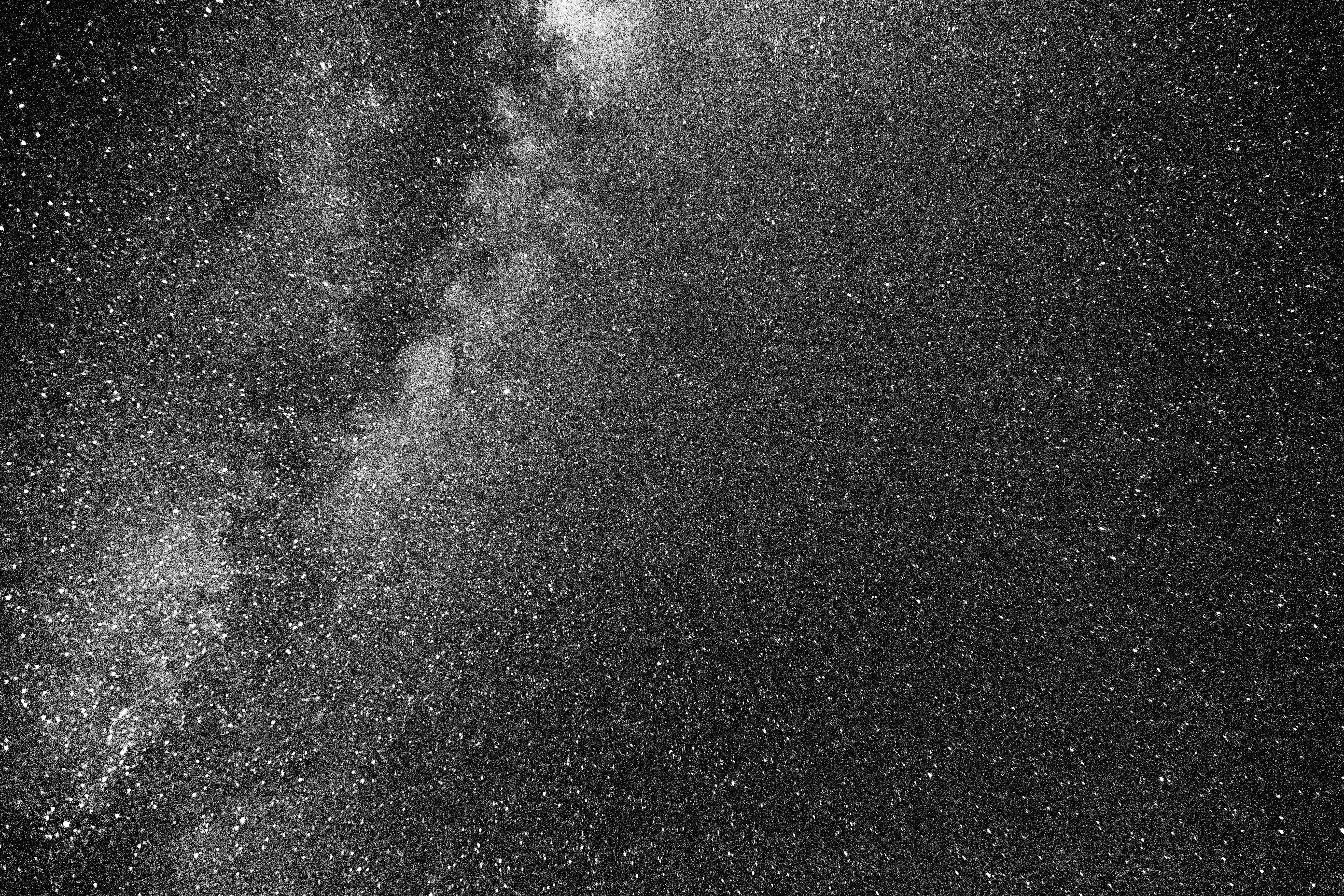
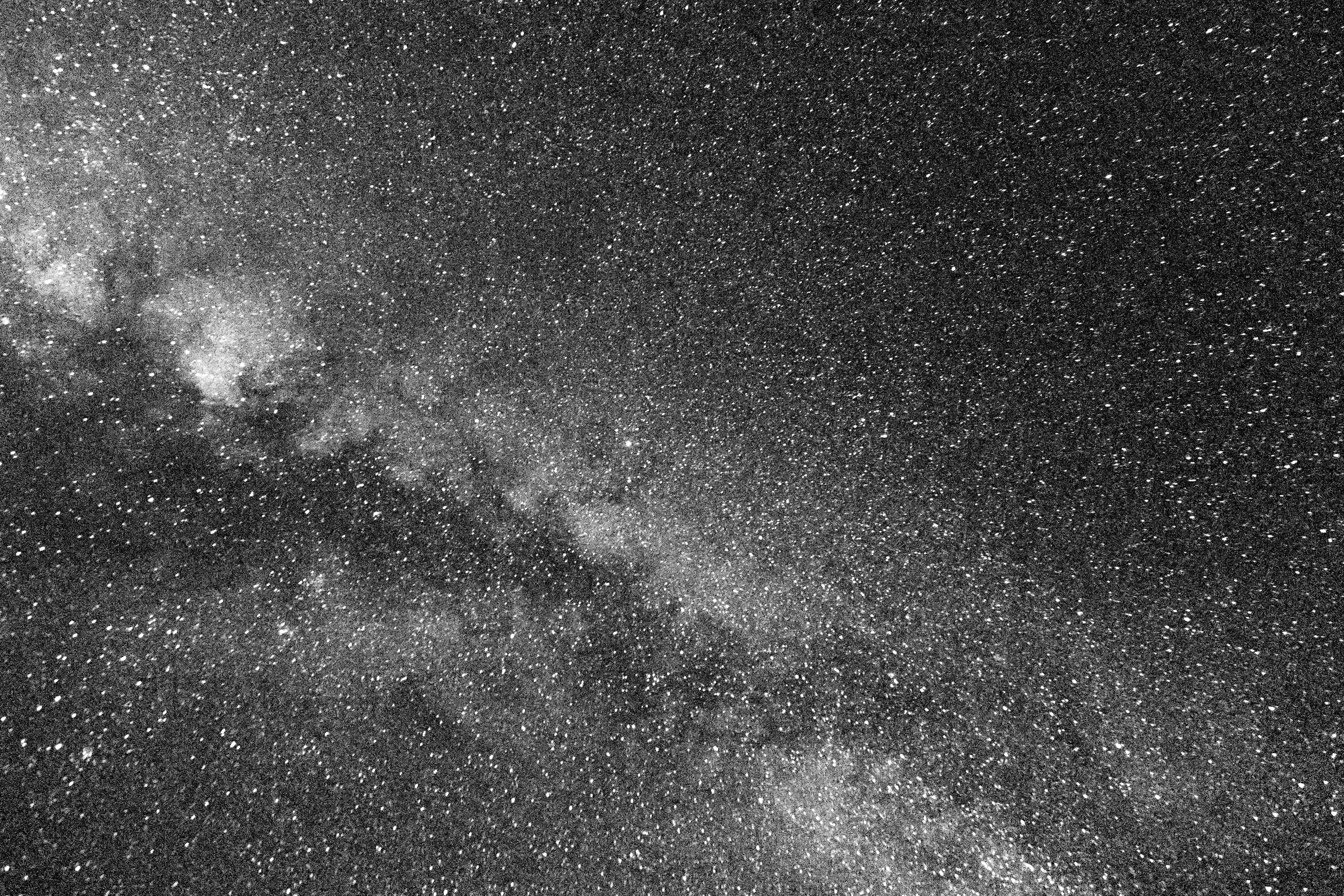
These photos really don’t stand up well to scrutiny but it was the first time that I can recall where I saw the Milky Way with the unaided eye!
After taking a night cruise on the Yellow Water Billabong, I decided to try to photograph the Milky Way and the stars. The moonless night was really bright with the Milky Way clearly visible to the naked eye. I've never tried to photograph the stars before. I think it came out OK for a first attempt, but I want to try some different things next time.


